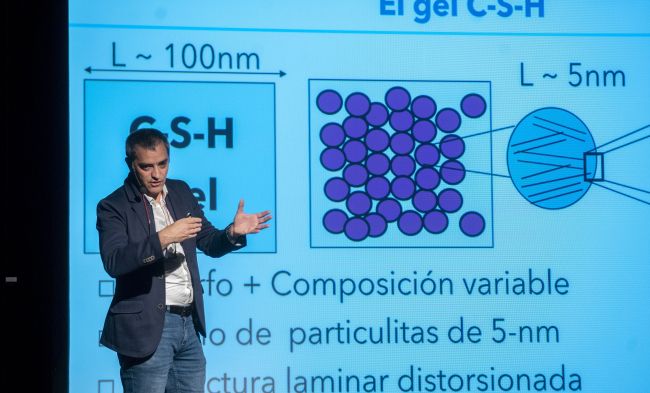Jorge Sanchez Dolado, work package leader for WP1 and WP6 on the MIRACLE concrete project, recently gave a talk at Tabakalera in San Sebastian, Spain titled “Green Concrete: Cementing a Sustainable Future“.
Sanchez Dolado discussed innovative solutions to reduce the environmental impact of concrete and cement production. As one of the most widely used building materials globally, improving the sustainability of concrete is crucial for mitigating climate change.
Some solutions covered in the talk included developing alternative cement binders, reusing waste materials as concrete aggregates, and integrating technology to monitor concrete carbonation. Sanchez Dolado also highlighted the MIRACLE project‘s efforts to tacke climate challenges.
“Concrete will continue being essential for urban development, but we need transformative solutions to eliminate its massive carbon footprint,” said Sanchez Dolado.

“Through international collaboration between industry and academia like the MIRACLE project, I’m optimistic we can pave the way to carbon-neutral concrete and cement.”
He argues that while cement production does account for 10% of human-caused CO2 emissions due to the large volumes produced, cement is extremely useful and ubiquitous, and with some modifications could actually help address environmental challenges.Specifically, Sanchez and his team (https://c2mgroup.org/ : Ceramic and Cement-based Materials) are working on:
- Developing “photonic concrete” that can radiate heat into space through the atmospheric window, helping cool cities and reduce the urban heat island effect. Tests show this concrete stays below ambient temperature even in sun.
- Using cement’s thermal mass to store heat from solar thermal plants to generate electricity at night.
- Creating cement-based batteries that can store and generate renewable energy.
He argues that if innovations like these are successful, cement could go from contributing significantly to climate change to being an important tool in sustainability, with huge potential positive impact. The challenges are bringing together the multiple disciplines needed and changing cement’s negative public image.

